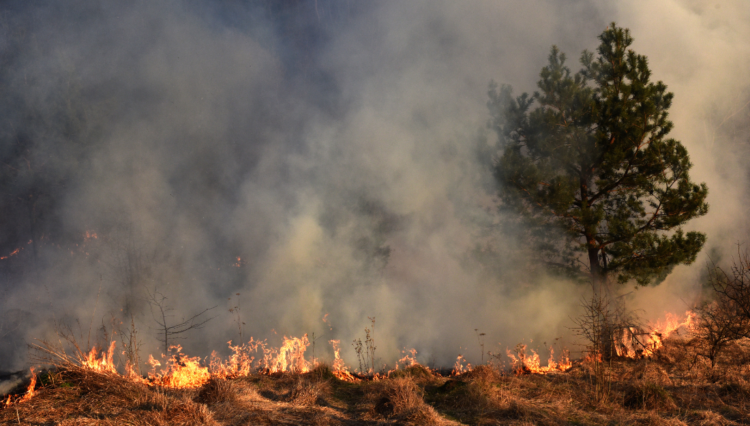By Aaron Miller-
Toxic smoke from Canadian wildfires has spread to Pennyslvania, as millions of Americans in another continent remained under air pollution warnings.
Authorities have emphasised the importance of U.S residents staying inside and limiting or avoiding outdoor activities, with a number of schools in some cities closed, sporting events cancelled, and air travel disrupted.
Canada is experiencing one of its worst-ever wildfire seasons, with blazes suffusing large parts of the country and creating hazardous smoky conditions across the continent and beyond.
New York City had the worst air quality of any big city in the world on Thursday morning, while the second worst was Detroit.
Canada is experiencing its worst fire season ever. It started early on drier-than-usual ground and accelerated very quickly, exhausting firefighting resources across the country, according to fire and environmental officials.
Canadian officials asked other countries for additional help fighting more than 400 blazes nationwide that already have displaced 20,000 people.
Smoke from the blazes in various parts of the country has been lapping into the US since last month. This intensified with recent fires in Quebec, where about 100 were considered out of control Wednesday.
The smoke was so thick in downtown Ottawa, Canada’s capital, that office towers just across the Ottawa River were barely visible
Air quality levels were in the 150-200 range on Thursday, marking a slight improvement from Wednesday when record-setting hazardous levels were observed, per Fox Weather.
Smoke from wildfires in Canada has been moving south into the US since May. Hundreds of fires are burning in Canada, from the western provinces to Nova Scotia and Quebec in the east, where there are more than 150 active fires in a particularly fierce start to the summer season.
Millions of Americans have been forced to breath hazardous smoke as the authorities desperately try to get on top of the emergency.
The wildfires are believed to have been caused either by lightning, as in the case of Quebec, or accidentally by human activity.
The weather system driving the smoke south “will probably be hanging around at least for the next few days,” Bryan Ramsey, a US National Weather Service meteorologist, told the Associated Press.
“Conditions are likely to remain unhealthy, at least until the wind direction changes or the fires get put out,” Ramsey said.
“Since the fires are raging – they’re really large – they’re probably going to continue for weeks. But it’s really just going be all about the wind shift.”
In New Jersey, public schools in Elizabeth and Newark were closed on Thursday, News12 reported, while public schools in Yonkers, New York, also shut their doors. Students in New York City public schools were on a pre-scheduled “non-attendance” day.
New Jersey’s health commissioner, Judith Persichilli, emphasised that the air quality was particularly a risk for young children and suggested those with asthma medicine or rescue inhalers should keep them nearby. She also recommended that children avoid athletic activity.
“Children are particularly at risk,” Persichilli said on Thursday during a news briefing in Newark. “This is because they breathe more air relative to their size.”
Kathy Hochul, the governor of New York, said the state was making a million N95 masks – the type prevalent at the height of the Covid-19 pandemic – available at state facilities, including 400,000 in New York City. She urged residents to stay indoors.
“You don’t need to go out and take a walk. You don’t need to push the baby in the stroller,” Hochul said on Wednesday night. “This is not a safe time to do that.”
On Thursday, Eric Adams, the New York mayor, said “right now, the smoke models are not indicating another large plume over the city” and that there was a chance of “significant improvement” throughout Friday.
In Washington, Muriel Bowser, the mayor, ordered schools to cancel outdoor recess, sports and field trips on Thursday. In suburban Philadelphia, officials set up an emergency shelter so people living outside can take refuge from the haze.
More than 400 fires burning across Canada have left 20,000 people displaced. The US has sent more than 600 firefighters and support personnel to assist Canadian firefighters, the White House said on Wednesday.
Joe Biden spoke to Justin Trudeau, the prime minister of Canada, by phone on Wednesday. Trudeau’s office said he thanked Biden for his support and that both leaders “acknowledged the need to work together to address the devastating impacts of climate change”.
The Federal Aviation Authority said poor visibility caused by the smoke would continue to affect air travel. On Thursday morning, the FAA paused some flights heading to LaGuardia airport in New York.
In New York City, performances of Hamilton and Camelot were cancelled on Wednesday night due to the difficulties caused by the air pollution, while baseball games in New York and Philadelphia were postponed.
Ecological Impact
The wildfire’s progression from Canada to Pennsylvania is expected to have detrimental effects on the natural environment. Forests, grasslands, and wildlife habitats along the fire’s path are at risk of destruction. Native vegetation, including trees, plants, and shrubs, would be consumed by the flames, leading to the loss of biodiversity.
There are also concerns that the destruction of habitats can disrupt the local ecosystems and result in the displacement or even loss of wildlife species. The long-term ecological recovery in affected areas would require significant time and resources.
Infrastructure and Property Damage
There are also concerns that the spread of a wildfire into populated areas of Pennsylvania would pose a significant threat to infrastructure and property. Homes, buildings, and infrastructure, such as power lines and transportation routes, can be at risk of destruction. Evacuations may become necessary, causing disruption and displacing residents. Fire suppression efforts, such as deploying firefighting teams and equipment, would require substantial resources and could strain emergency response capabilities.




